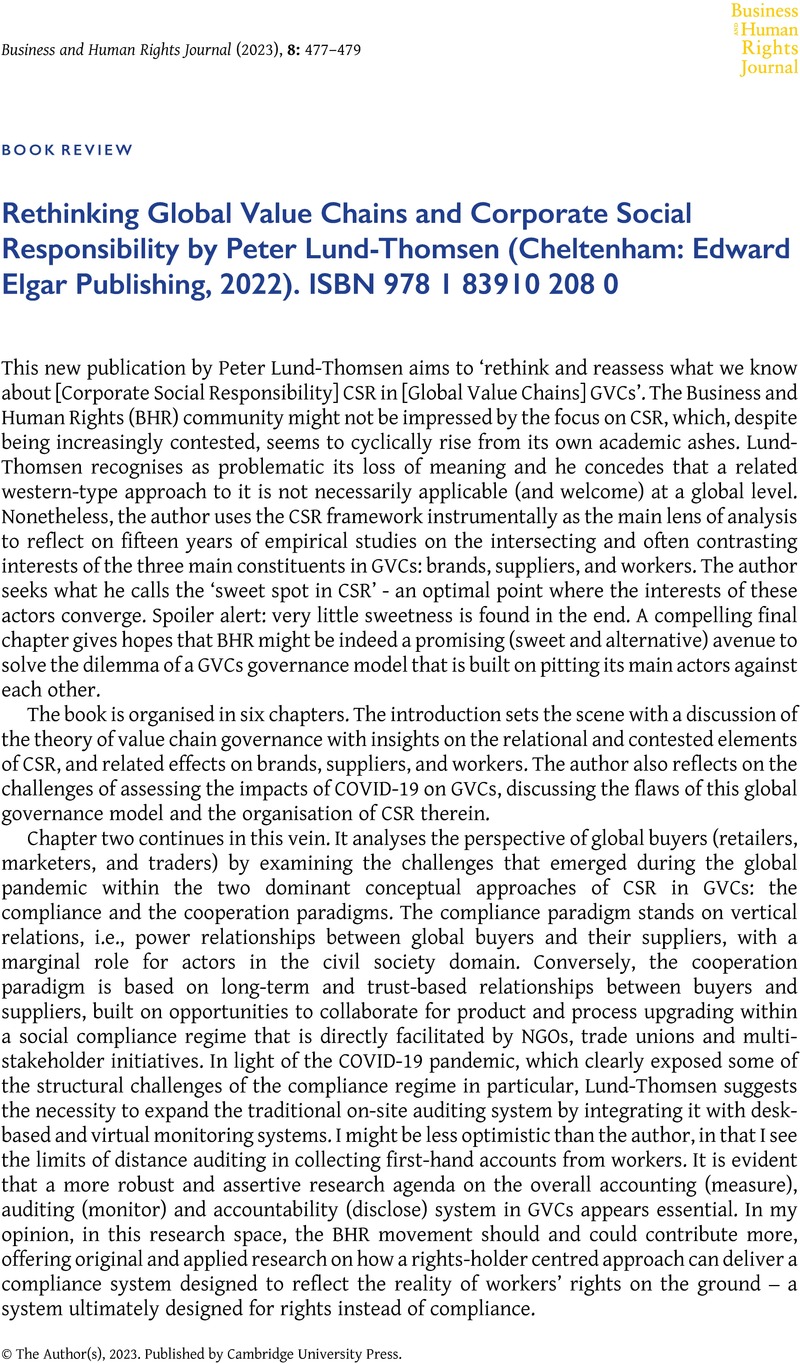No CrossRef data available.
Published online by Cambridge University Press: 16 November 2023

1 For a reader not familiar with the work of Professor Stephanie Barrientos, her book Changing Gender Patterns of Work in Global Value Chains (Cambridge: Cambridge University Press, 2019) represents an excellent reading and a summary of decades of research and theorization on women workers in GVCs. Interestingly, in 2020 Peter Lund-Thomsen wrote a review of that book that can be found here https://doi.org/10.1177/1024529420937992.